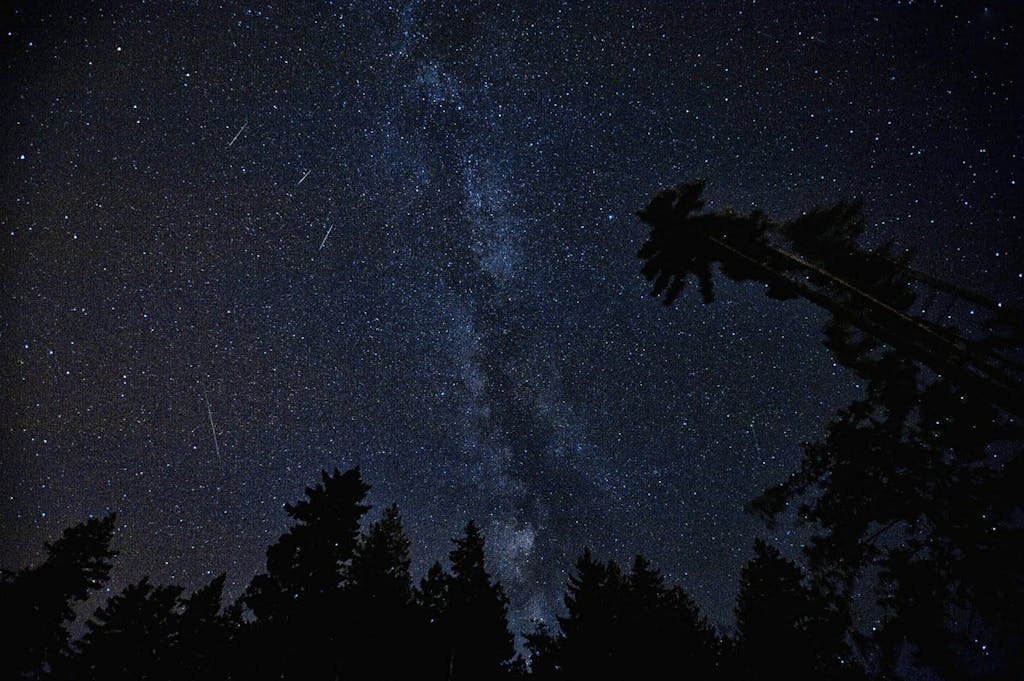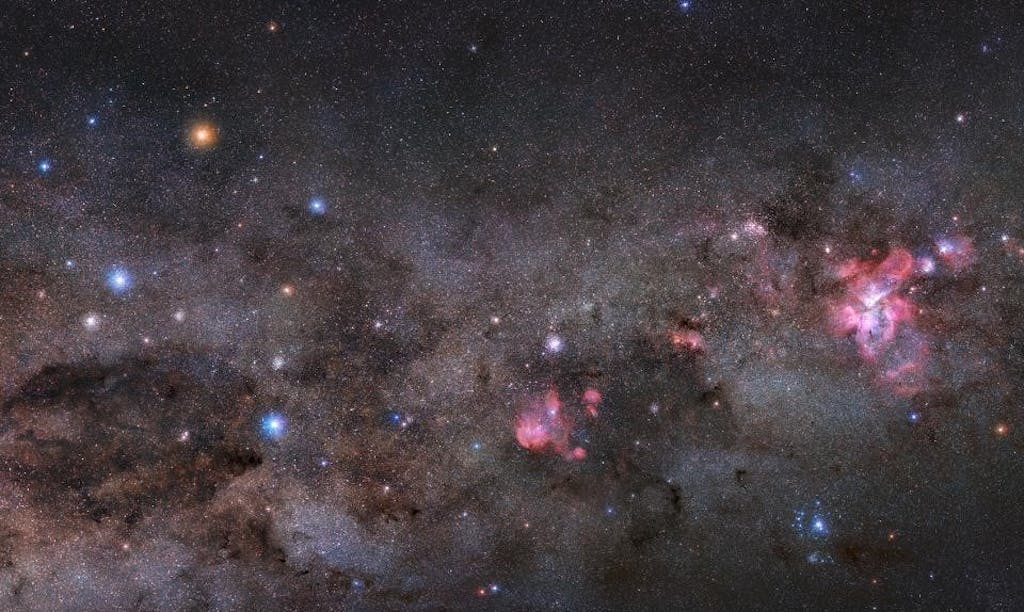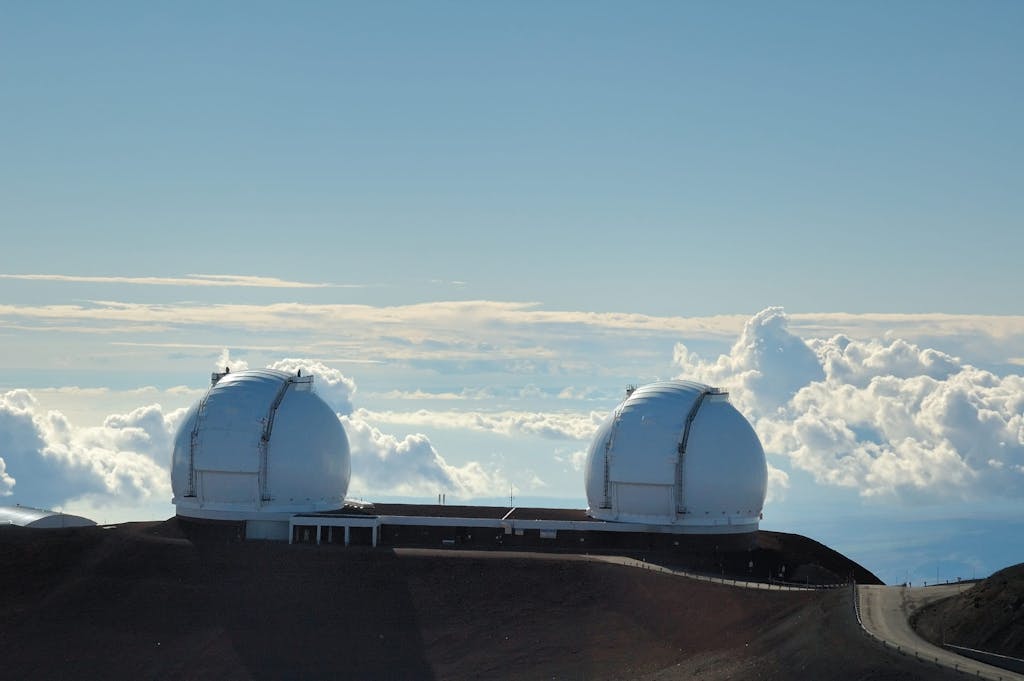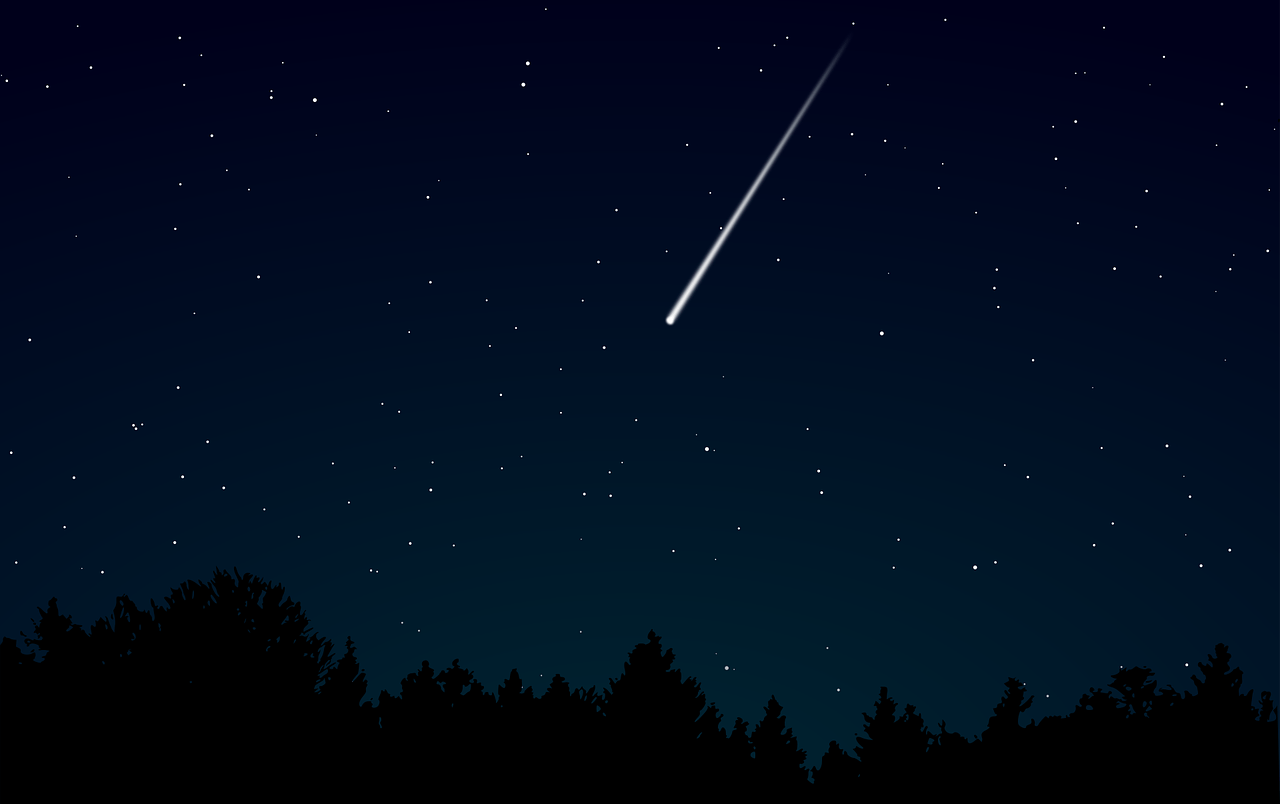During the Fall Equinox in Hawaii (and the rest of the Northern Hemisphere). There will be almost exactly the same amount of night and day, with the days getting shorter until the Winter Solstice on December 21-22. It’s an exciting time for Hawaii astronomy because the stars will be out increasingly longer for the next three months.
The Fall Equinox is meaningful to me. I’m a fairly even-keeled person, striving always to find some kind of balance between hopeless pessimism and naïve “everything is great” optimism. The equinox is a cosmic affirmation that such balance is not only possible but inevitable. And there is so much to see and marvel at in Hawaii’s nighttime skies in the months to come for fans of Hawaii astronomy.

Hawaii astronomy – Fall meteor showers
The most obvious and spectacular events will be meteor showers streaking through the heavens nightly, visible from anywhere you can see the sky at night. The Orionids Meteor Shower light up on October 2 through November 7, peaking in shooting star frequency on October 22. The Geminids Meteor Shower dazzle us from November 19-December 24, peaking on the night of December 14-15. This means that visitors and residents will have plenty of opportunities to “wish upon a star” as we approach winter. Even areas with high light pollution like Honolulu’s urban corridor, including Waikiki, will still see the sky steaking with these gawk-worthy celestial visitors.
Ancient Native Hawaiian cosmology and rituals are deeply rooted in a profound understanding of astronomy. A kind of Hawaiian zodiac is similar to those of the East and West and based on the lunar calendar. Hawaiians recognize constellations in the same way some might identify the Big Dipper or Orion’s Belt. The ancient Polynesian navigators that originally settled the Hawaiian Islands relied on the movements of the stars to travel thousands of miles over the vast Pacific Ocean.

Hanaiakamalama – the “Southern Cross”
One of the most essential constellations for those early navigators was what is known in the West as the “Southern Cross”. Hawaiian cultural practitioners know it as Hanaiakamalama, or “foster child of the moon”. Hawaii, at 21 degrees latitude north, is among the only places in the US to see the famous cluster of stars, as it never appears in skies above 26 degrees latitude north. You’d have to head to southern Texas or Florida to catch a glimpse of the Southern Cross. We’ll pass. We prefer Hawaii astronomy.
In Hawaii, Hanaiakamalama, the Southern Cross, appears briefly (cosmically speaking) for several weeks in late December and January. It can be seen in the southern sky just above the horizon before sunrise. It’s an annual “peek-a-boo” that is loaded with spiritual and cultural significance. Those early Polynesian voyagers that first settled in Hawaii are believed to have come from Tahiti, due south of the Hawaiian Islands. There are multiple locations around Hawaii that are believed to be ancient astronomical observatories, some oriented for sighting Hanaiakamalama.

Hawaii is home to vital astronomical research, much of it taking place at the summit of Mauna Kea on Hawaii Island. However, there are many more resources for visiting amateur astronomers to take advantage of during a Hawaii vacation. The Imiloa Astronomy Center on the Big Island and the Bishop Museum Planetarium on Oahu are great places to visit. Let our experts at Hawaii Aloha Travel help you discover the wonders of Hawaii astronomy. To book your Hawaiian trip give us a call or use our Trip Planner.




